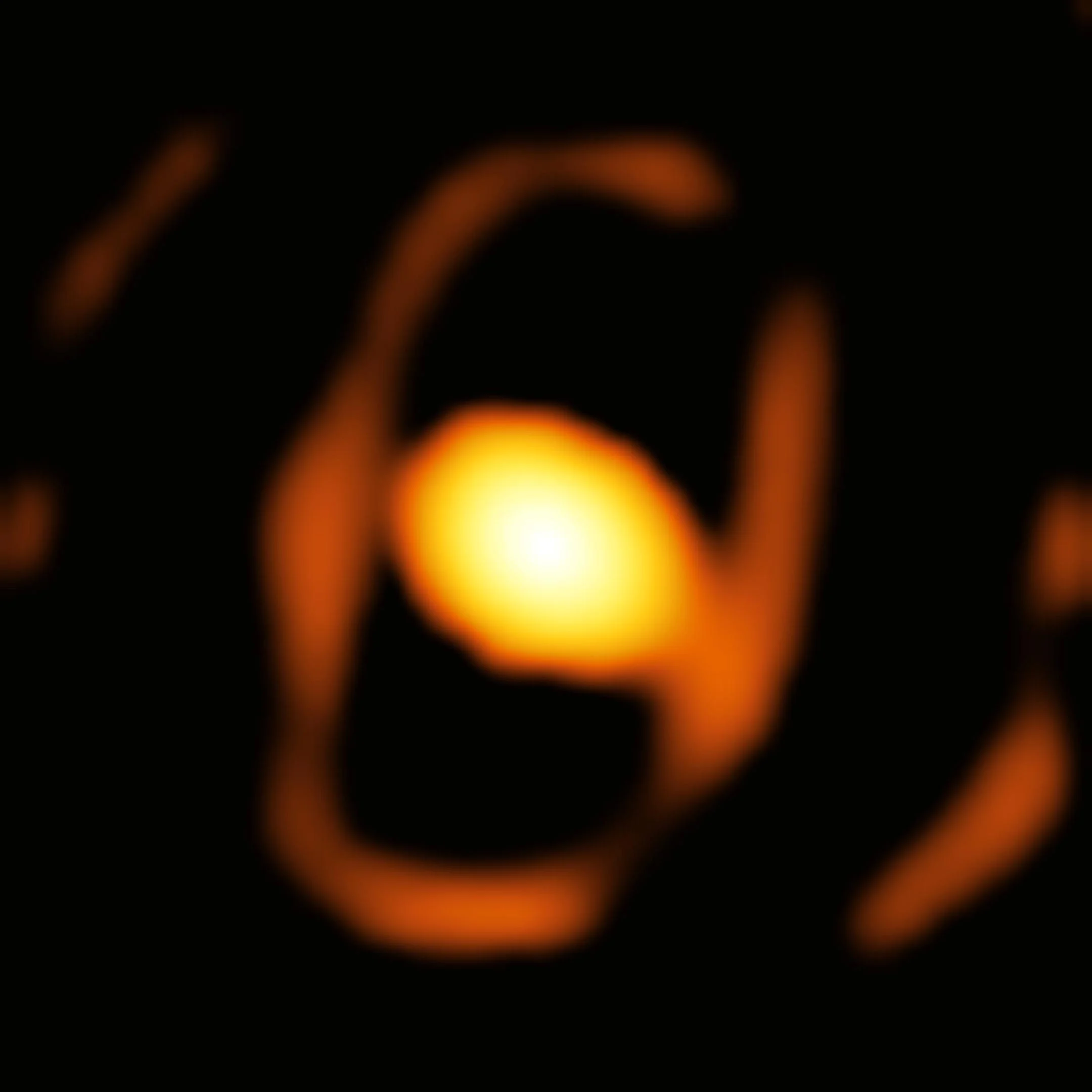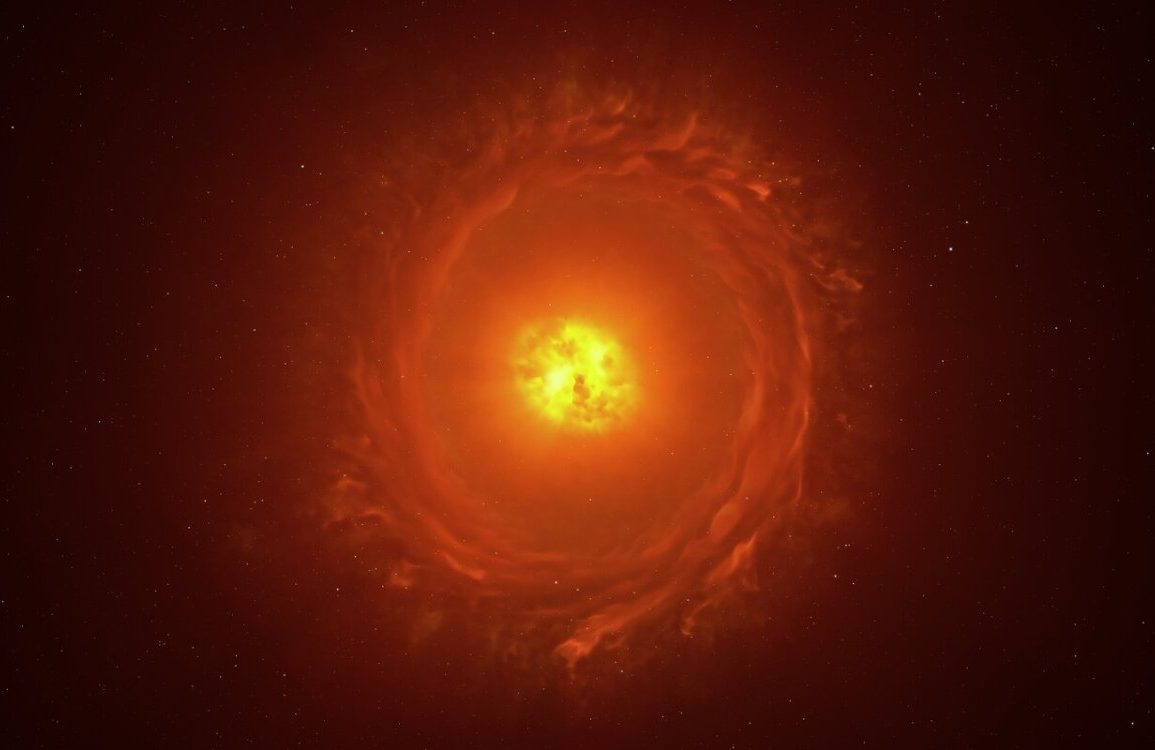Astronomers have captured an unprecedented close-up image of WOH G64, a star beyond our galaxy, offering critical insights into its life cycle. This red supergiant, located 160,000 light-years away in the Large Magellanic Cloud, was observed during the dramatic stages leading to its eventual supernova. Using the European Southern Observatory’s Very Large Telescope Interferometer (VLTI) in Chile, researchers documented the star as it expelled gas and dust, marking a pivotal phase in its evolution.
WOH G64 is a colossal red supergiant, approximately 2,000 times larger than the Sun, making it one of the largest and brightest stars known. Discovered in 1981, it has drawn attention for its immense luminosity and rapid material shedding. Decades of study revealed that the star is losing mass at a rate that suggests it is nearing the final stages of its life, transitioning into a smaller and hotter star before its core collapses.
Recent advancements with the GRAVITY instrument on the VLTI enabled astronomers to observe an egg-shaped cocoon of dust surrounding the star. This structure likely results from the massive ejection of material, although a companion star may also play a role in shaping the cocoon. Over the past decade, WOH G64 has dimmed significantly, a phenomenon attributed to the thick dust cloud forming around it.

If placed in our solar system, WOH G64 would extend beyond the orbit of Jupiter due to its enormous size. Despite its fading brightness, it continues to provide valuable information about the end-of-life processes in massive stars. Researchers cannot predict precisely when WOH G64 will explode, though it could still take thousands of years. Its behavior parallels that of other massive stars, such as Betelgeuse, though WOH G64’s changes appear far more extensive.
The star’s transformation is an extraordinary opportunity for scientists to study the dynamics of red supergiants during their final phases. The detailed observations have revealed how much material WOH G64 is expelling and how this shapes its structure and brightness. This information adds to the understanding of how stars of this scale evolve and approach their eventual supernova explosions.
Led by Keiichi Ohnaka and Jacco van Loon, the research team plans to monitor WOH G64 further, utilizing future upgrades to observational instruments. These continued studies will refine knowledge of stellar evolution and the factors influencing the explosive deaths of stars. WOH G64’s dramatic changes provide a rare and detailed look at the processes shaping the end stages of massive stars’ lives.

